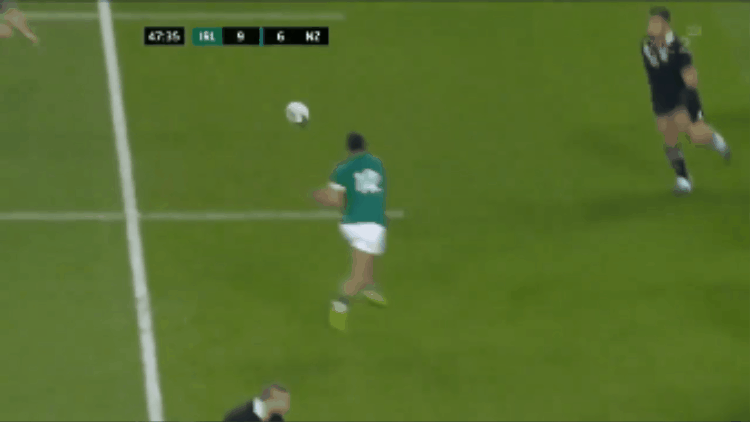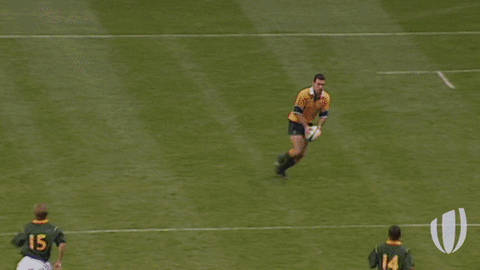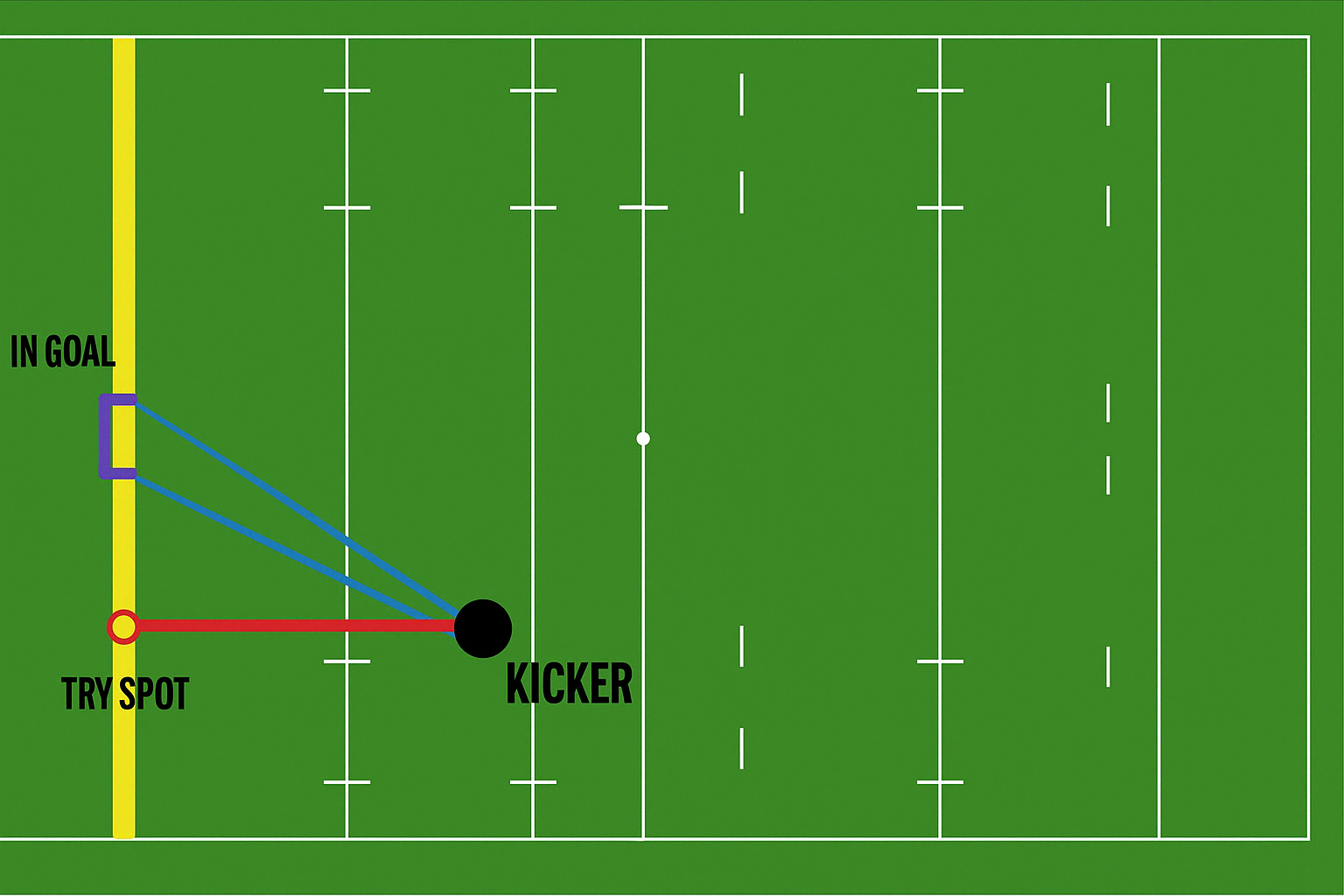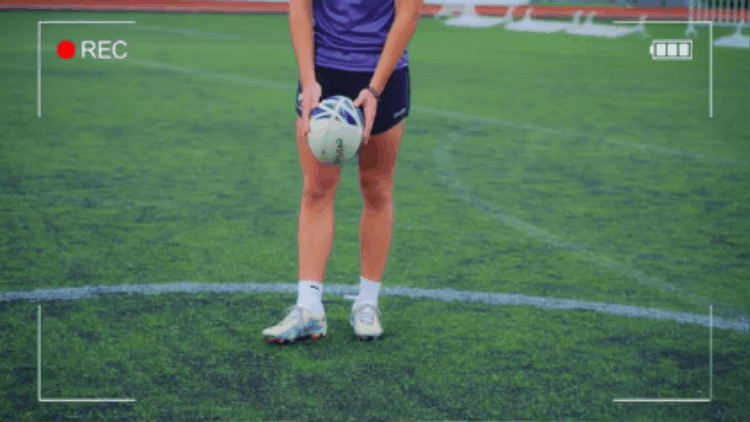RUGBY 101
Watch Your First NRL Game In Just 10 Minutes
Welcome to the National Rugby League (NRL), Australia’s premier rugby league competition and your new obsession in the making. I’ve designed this guide to speak to Canadian & American sports fans looking for a new sport to follow in an effort to translate the game easier.
Never watched a game? No sweat. This crash course is designed to turn you into a fan of the game in just 10 minutes. You’ll be yelling “SIX TO GO!” at your TV before halftime.
Kick-Off: The Game Begins
Like the NFL, every game starts with a coin toss. The away captain will always call the toss. If they win, they choose one of two things:
- If they’d like to start the game by kicking it to the other team
- Or which side of the field they would like to defend first.
To prepare for kick off, the receiving team must retreat at least 10 meters from the kick off point which is the halfway line. The ball is then kicked from halfway, and play begins.
The receiving team catches the ball and runs it straight into contact – yes, real hits, no pads. If you came for collisions, you’re in the right place.
Moving the Chains…Rugby Style
Here’s the rhythm of rugby league. Think of it like this:
- Teams have six tackles (like six downs) to move the ball downfield and score a try, (like a touchdown – but harder).
- After each tackle, the play resets with something called a play-the-ball. The tackled player gets up, places the ball on the ground, and rolls it backward with their foot to a teammate.
- Unlike the NFL, there’s no huddle. It’s fast. It’s constant. It’s chaos in the best way.
You’ll see forwards (big, bruising guys) take the early runs to wear down the defense, while backs (speedsters and play-makers) look to exploit space and go wide.
And remember: the ball can only be passed backward or sideways. Pass it forward? That’s a penalty, and the other team will get the ball if you do.
What Happens on Tackle 6?
Teams use their six tackles to attack. But what happens when you reach tackle number six?
Most of the time, the team will kick the ball to:
- Push the other team deep into their own territory,
- Try to regather it, or
- Force a mistake.
If they don’t kick and get tackled on the sixth? Turnover. The other team takes over from that exact spot.
You’ll also notice a variety of kicks:
Grubber: low and bouncy, tough to handle.
Chip & Chase: short and high, aiming for teammates to regather.

Bomb: long and towering, used to pressure the backfield – like a punt.

Scoring: Tries, Conversions, and Kicks
The Try (4 Points)
This is your touchdown – but tougher. To score a try, a player must carry the ball over the opponent’s try line and press it down to the ground with control. There’s no “breaking the plane” like in American football.
No downward pressure? No try. Get your tush pushes out of here Philly.
The Conversion (2 Points)
After a try, the scoring team gets a shot at a conversion kick worth 2 points.
Here’s the twist: the kick must be taken perpendicular to where the try was scored. So, if the try was scored out near the sideline, the kicker lines up in line with that spot and can walk as far back as they want to get a better angle.

They’ll usually find the sweet spot between distance and angle to slot it between the uprights and over the crossbar.
Important:
- A team doesn’t have to attempt a conversion. They can choose to skip it for strategic reasons (like managing the clock).
- Regardless of whether they attempt or succeed in the kick, possession after the conversion always goes to the team that conceded the try…kind of.
- That team kicks off from the center-line back to the team that just scored against them!
You read that right…score a try, and you get the ball back. Rugby league rewards success. This loop keeps the pace electric. Big plays lead to more possession. Momentum matters.
Other Ways To Score
Penalty Goal (2 Points)
If the defending team commits a penalty (high tackle, offside, etc.), the attacking team can choose to kick for goal from the spot of the foul. Make it? That’s 2 points.
Drop Goal / Field Goal (1 Point or 2 Points)
During open play, a player can attempt a drop goal by bouncing the ball off the ground and kicking it through the uprights.
- Inside the 40-meter line? 1 point.
- Beyond the 40? That’s a 2-point field goal (a new rule added in 2021).
Caution: The ball must touch the ground before it’s kicked. No bounce = no goal.

Penalties, Knock-ons, and Infractions
Here are some common reasons for stoppages:
- Knock-on: When a player fumbles the ball forward.
- Forward pass: Illegal. Must go backward or sideways.
- High tackle: Contact above the shoulders? That’s a penalty.
- Offside: Defenders must retreat 10 meters at each play-the-ball.
- Out on the full: Occurs when a player kicks the ball out of the field of play – known as ‘in touch’ – without it bouncing infield first.
Penalties often result in:
- a handover, where the other team gets the ball,
- A free kick to gain ground,
- Or a shot at goal if it’s within range.
The Teams and the Clock
You’ll see 13 players on the field for each team, with another four on the interchange bench who can be substituted into the game. These substitutions can happen for tactical reasons, due to injury, or to manage player fatigue. A maximum of eight substitutions in a game are allowed per team.
The game is played in two 40-minute halves with a 10-minute break in between. There are rarely any stoppages of the clock during game-play except for TV Match Official Checks (think officials reviewing a play in NFL), serious injuries, substitutions, and other rare situations1. What this means is all those commercial breaks you’ve become accustomed to – kiss them goodbye. This is 90 minutes of near non stop action.
Whoever has the most points at the end of 90 minutes wins.
1In the final five minutes of the match, the clock stops after a conversion or penalty kick until play restarts at halfway which adds a ton of last minute excitement to games with teams squeezing every second they have to score.
Key Terms You’ll Hear
| Term | Meaning |
|---|---|
| Try | Score by grounding the ball in goal (4 pts) |
| Conversion | Kick after a try (2 pts) |
| Play-the-ball | Reset after a tackle |
| Set of Six | Your six chances to score |
| Grubber/Bomb/Chip | Types of tactical kicks |
| Knock-on | Fumble forward (loss of possession) |
| Sin Bin | 10-minute ejection for serious infractions |
You’re Ready To Watch!
That’s your crash course in how rugby league ticks—six tackles, big hits, and non-stop momentum. Now you’ve got the basics to follow the action, spot the strategies, and feel the intensity.
Welcome to the game. Your new obsession starts here.
But this is just the start. Next up? Learn how the season works, what each position does during a game, and check out our rugby league glossary to decode all the words you’ll keep hearing.
Join the Community
Whether you’re new to the NRL or already shouting at your screen every weekend, our Discord is the place to be. We explain the rules, break down plays, and ride the highs and lows together.
👉 Join Our Discord or follow us on Instagram and Twitter to join the Footy Fam.
